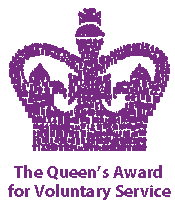Which season is best for this activity?
This activity can be done at any time of the year. The session is held outdoors; suitable clothing is required in the winter months. We only work indoors if the weather is exceptionally bad.
Learning objectives and links to the National Curriculum of Study
By the end of the session the children will be able to:
- Sort waste into recycling categories
- Recognise the recycling symbol
- Consider ways to recycle, renew and reuse.
- Explain the impact humans have on their local area, both positive and negative
- Make responsible choices that affect the world around them.
- Consider ways we can make our schools/homes more sustainable.
The session links directly to the National Curriculum Science Programmes of Study (living things and their habitats) for Key Stages 1 and 2. (https://bit.ly/3GlgU58). All our sessions are underpinned by detailed lesson plans. These plans are adjusted to take account of the variations in ability and skill level across the Key Stages.
We will enable the children to take part in practical activities that allow them to make informed choices that help to make a difference and become more responsible citizens.
Outline of the Activity
We begin with an introductory discussion about how we all need to help protect our planet. One way to do this is to recycle, this is something every single person can be involved in. We will encourage children to recognise and look for the recycling symbol.
As a class we will take part in a litter picking activity, in teams the children will use litter pickers to collect and sort the rubbish –sorting it into the correct recycling containers. Upper Key Stage 2 will look in more detail at different types of plastic.
Some of the items from these containers will be used in the activities to follow – therefore demonstrating how to recycle, renew and reuse items.
Divided into three groups, the pupils carry out three practical tasks:
1.) Make a recycled pot to plant wildflower seeds – they will discuss how planting trees and plants benefits our planet. They will also take part in a team work exercise to create a model of a tree from natural materials on our nature trail.
2.) Children will be shown examples of a polluted pond, discussing the amount of time certain rubbish items take to decompose- they will recognise which of these items could have been recycled and which could be avoided completely. They will then pond dip from our very healthy pond using classification charts to identify what they find – what would happen to our pond creatures if our pond was polluted?
3.) Using recycled bottles and organic matter, children will work in groups to make their own ‘Rot Pot’ – a composting pot. This will require following instructions carefully. The children will take these back to school and will be able to make observations about how their compost changes over time.
Ideas for pre-visit learning
Before bringing a group to do this activity, here are a few ideas to help to introduce the subject:
- Brainstorm items that can be recycled
- Choose an item – glass, paper, plastic – and research how it is recycled.
- Discuss land fill sites and the Great Pacific Garbage Patch.
Ideas for follow-up work back at school
- The rot pots can be stored in a warm sunny place and over time children can make observation and measurements of the contents. By week 6 you should have black, crumbly compost.
- This compost can be used as a fantastic nutrient rich food for the school garden or pot plants.
- Introduce a better recycling system at school.
- Create posters to encourage better recycling.
- Look into local litter picking groups.
All children engaged throughout and activities all very useful. Great session, great leaders.


